This saying, 民以食為天 mín yǐ shí wéi tiān, is a good indication that the Chinese are pretty serious about food and eating. I have written previously on this blog about food terminology in the Chinese language. Suffice it to say, the Chinese love to eat, and when they are not eating, they are talking about eating, or planning what to eat next. China is truly one of the great cuisines of the world, and one of the ancient cuisines that has been around for a very long time. In fact, during the Song Dynasty (960-1279 A.D.) one could find more than 200 dishes served at a banquet, including 41 dishes of fish, shrimp, snails, pork, goose, duck mutton, pideon, etc., 42 dishes of fruits and sweetmeats, 20 dishes of vegetables, 9 of boiled rice, 29 dishes of dried fish, 17 different drinks, 19 kinds of pies, and 57 desserts. In the capitol city of of Hangzhou you could find 18 different kinds of beans and soya beans, 9 kinds of rice, 11 kinds of apricots, 8 of pears, and so on. (See Gernet, Jacques. Daily Life in China on the Eve of the Mongol Invasion, 1250-1276). Think about what was going on in Europe during this time.
In China’s ancient book of poetry, The Book of Songs (shī jīng 詩經), published around the 5th century B.C., there are 130 references to plants, 200 to animals, 19 fishes, 38 types of poultry, the seasonings mentioned include salt, honey, malt sugar, ginger, cinnamon, and pepper. By contrast, the Bible only mentions 29 food items.
There are at least three reasons we can contribute to China’s long obsession with food. One, there has been a very long, sustained civilization. In other words, there has been a long time to develop the many food sources. Two, geographical diversity. China is a land of many geographical features, from desert to jungle to fertile river plains. And three, for much of China’s history the people have been threatened with famine. This has resulted in the Chinese being very creative with all food sources.
三大菜系 sān dà cài xì: Three General Food Categories
The first and biggest category is Han/Man 汉/满 which refers to the Han or Chinese majority and Manchurian (the rulers of the last imperial dynasty. This accounts for the vast majority of all Chinese food in China.
The second category is Muslim or kosher cuisine, referred to in Chinese as 清真, and the third category is vegetarianism 素 which is often associated with Buddhism.
八大菜系 bā dà cài xì: The Eight Culinary Tradtions
Chinese food, represented under the broad Han/Man category is often broken down into eight distinct culinary categories, which are generally divided by geographical region.
1. Chuān 川 Sichuan
2. Huì 徽 Anhui
3. Lǔ 鲁 Shandong
4. Mín 闽 Fujian
5. Sū 苏 Jiangsu
6. Yuè 粤 Guangdong, Hong Kong
7.Xiāng 湘 Hunan
8. Zhè 浙 Zhejiang
四大菜系 sì dà cài xì: The Four Major Culinary Traditions
This list can be further simplified into four main geographical areas that incorporate the eight ares listed above. They are:
Lǔ 鲁 Northern China
Huáiyáng 淮扬 Eastern China
(Lower Yangtze River Basin, incl. Jiangsu, Zhejiang, Anhui)
Chuān 川 Western China (Sichuan, Chongqing, Guizhou, Yunnan)
Yuè 粤 Guangdong, Hong Kong
Northern Cuisine 鲁菜 lǔ cài (Shandong Cuisine)
• Wheat-based foods: noodles, steamed buns, fried flat breads
• Seasonings: garlic, chives, leeks, star anise, sweet plum sauces
• Poultry , especially duck, lamb, beef, pork
Eastern Cuisine 淮扬菜 huáiyáng cài (Jiangsu Cuisine)
• Land of fish and rice
• Light flavors that emphasize the natural flavor of the food; not too salty or sweet
• Famous for soy sauces, vinegars, and rice wines
• Stir-frying and steaming most common
Western Cuisine 川菜 chuān cài (Sichuan Cuisine)
• Land of abundance
• Liberal use of spice (chili peppers, Sichuan peppercorns)
• Lots of garlic, ginger, bamboo shoots, mushrooms, pork, chicken
Southern Cuisine 粤菜 yuè cài (Guangdong/Cantonese Cuisine)
• China’s haute cuisine
• Tastes and techniques a blend of China and the West
• Light flavors; delicate, fresh, tender, crisp
• Known for roasted meats: suckling pig, duck, chicken, BBQ pork


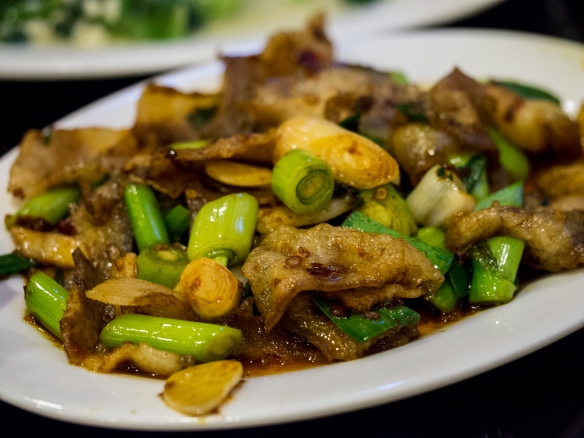


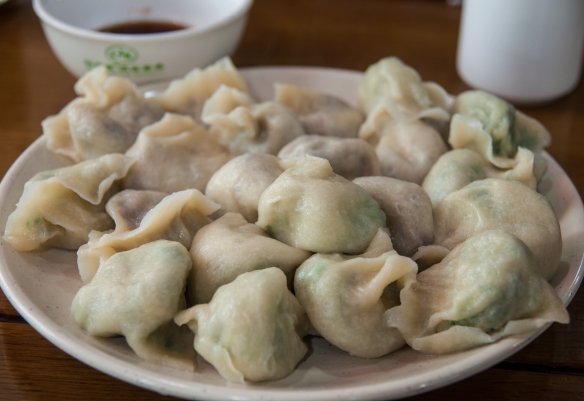



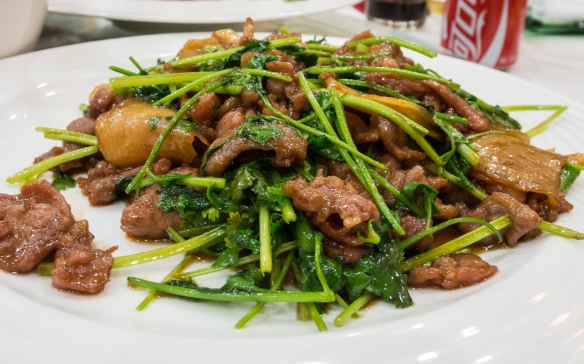
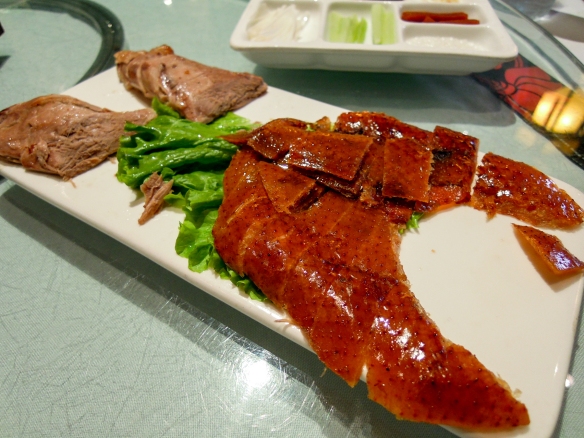

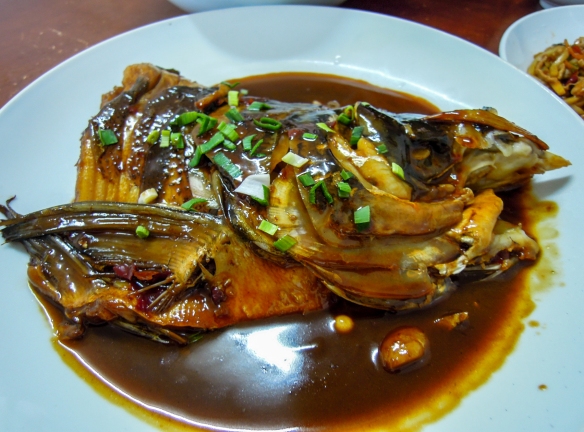



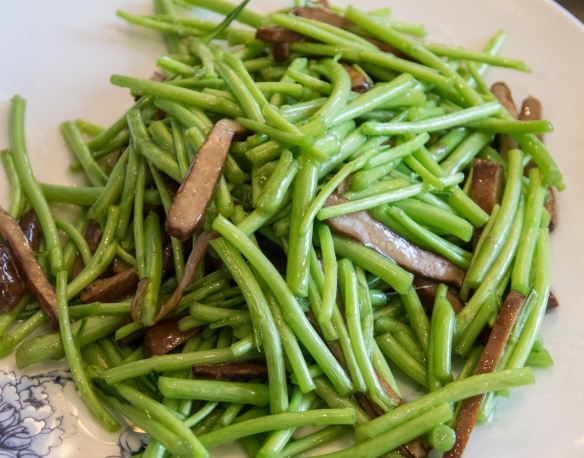
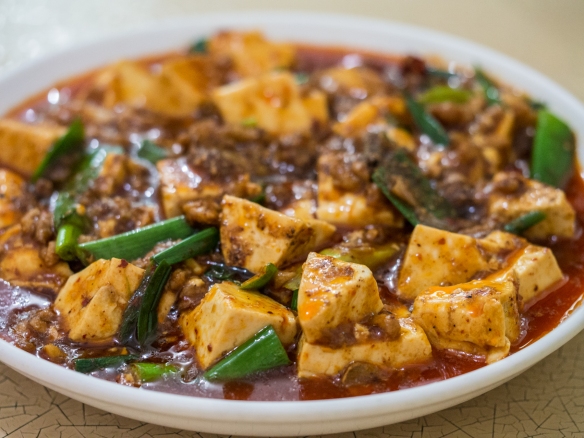
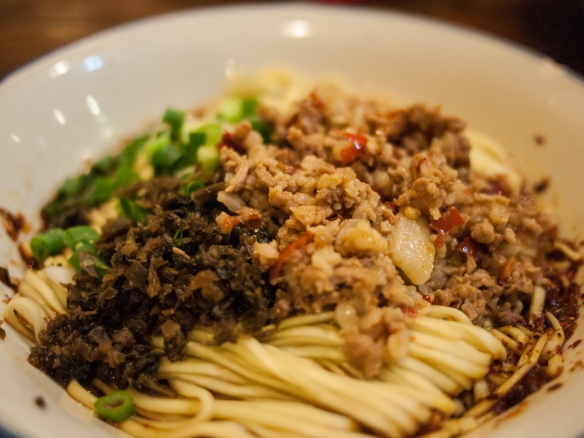
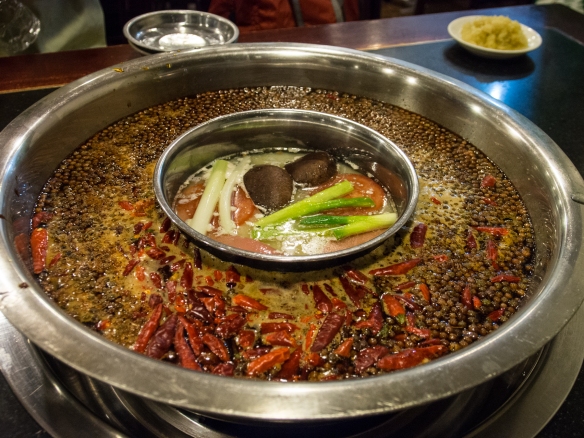



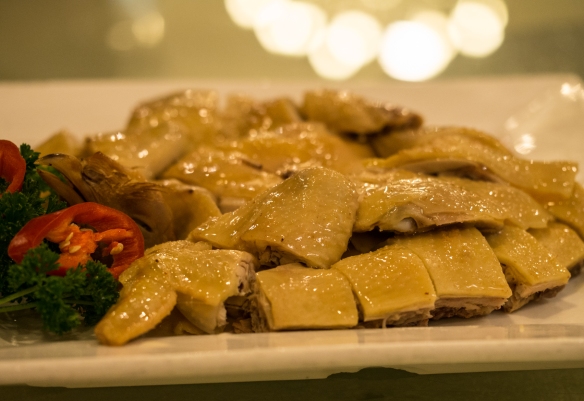
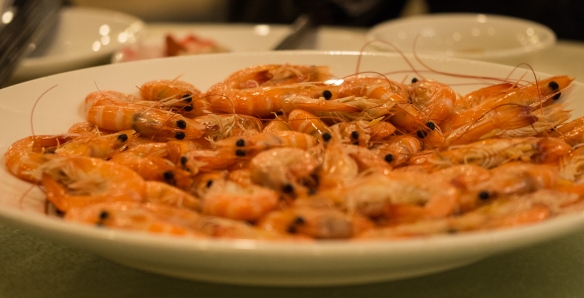
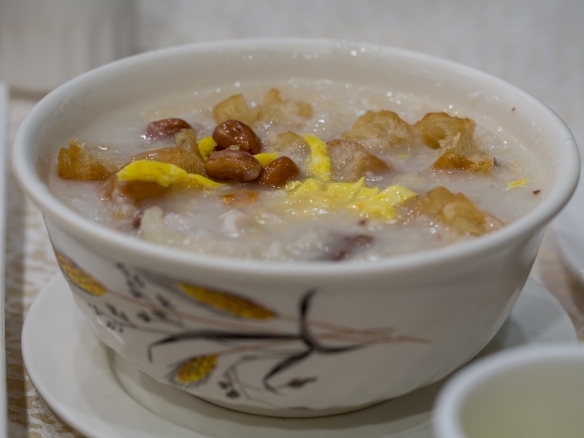

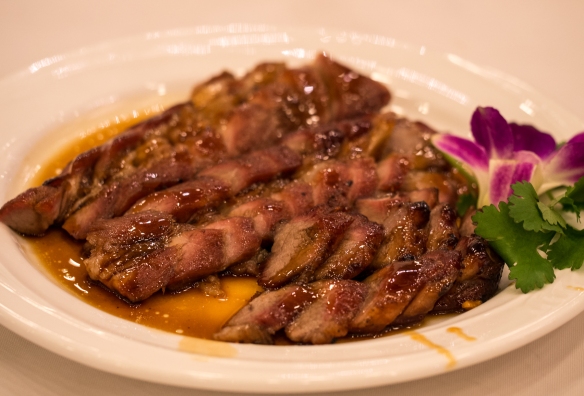

Chinese people love and have an obsession with food. During Song Dynasty, there could be more than 200 dishes at a banquet.
It is so fantastic that Chinese value food so highly. It is a great way to bond with individuals, and such a fantastic way to show appreciation to the community. Also, when a person brings and feeds another great food, it is a blessing and such an act of friendship and togetherness.
In recent years I’ve started to eat more Chinese food, but I’ve only encountered some of what’s on this list. A personal favorite of mine that you mentioned is the Sichuan style. The numbing powder and spice involved in most dishes makes me return for more as the sensations you get from eating this kind of food differs pretty immensely from other more savory or sweet tasting food of Guangdong or a Shanghai style. The total jumble of variety in China though leaves a lot to be explored!
I feel like I could spend my whole life learning about (not to mention eating…) Chinese cuisine and still know very little relatively speaking. There’s just so much!
Chinese food is my favorite, and I like it more than my country’s food. For this article, I enjoyed watching delicious foods and learned basic knowledge about traditional Chinese food!
When I was in China I was lucky enough to sample Sichuan food, and it lit my mouth on fire. The hot pot was phenomenal nonetheless.
I’ve grown up eating Chinese cuisines but I never knew that the different demographics impacted on the flavors and ingredients used in Chinese dishes. I think that Sichuan cuisine is my favorite because I love the explosive and bold flavors they use in their dishes. I’m from San Francisco and I am so grateful to have Chinatown just down the street, their culture and food is so exquisite and I’m happy I can experience it.
I never knew that the Chinese had so many different dishes. What surprised me the most was how many dishes and desserts you could find at a banquet. Very interesting! This makes me want to go to China even more because I relate to the saying “To the people, food is heaven (民以食為天)”
The wide variety of Chinese food always leave me in awe. During my trip to China, it was a fun experience to try all the different food. My favorite were the dishes from Szechuan. The tingling sensation of mala peppercorns is amazing.
After I read this article I realize the food is really important to Chinese people. It has a very close relationship with real life with the people live in China. I learn from the article why the foods became meaningful to them. One of the reasons is that China has a good geographic condition to get developed in many varieties of food because the country possesses a large range of land condition from desert to fertile river plains.
I love how the Chinese people make their food. I only ever grown up with just Panda Express around, which I know that was just fake Chinese food. Once my Chinese teacher invited me to her house, I was finally able to eat real Chinese food. It was so good that I wanted to eat more. The one food she made was Dumpling. It was so good. I would really like to try more Chinese food when I get to chance.
This article was very interesting and in depth with regards to Chinese food. A few things I found to be particularly interesting included how the food is divided by region and religion, as well as how colorful and well put together many of the dishes appear to be. While the food being different in each area of the country makes sense given the availability of goods in the area, the break up of food styles by religion is something I did not take in to account (i.e. Muslim and Buddhist style dishes). In addition, I found the presentation and vibrancy of all the dishes shown to be exceptional. Given the spices and styles of cooking, most of the color is natural and dazzling, much different from what is seen in the United States today with very monotone fast food taking over the food industry. Finally, the artistry and time taken to design dishes such as the fish dish presented as a fish as wowing and mesmerizing to look at.
That is true, food is heaven! I think you can eat three different meals for a whole month or more.
Great article! It makes me want to travel back to China and experience more of the food culture. The relationship between food and people is very interesting and I like the three reasons you give for China’s long obsession with food. After traveling to Zhangjiajie (张家界市) I’ve experienced the strong relationship between food and people and also the frequent use of round dining tables which I feel is an important part of the Chinese dining culture.
Ive eaten a lot of authentic chinese food, my dad being a chef in all. However looking at how many different dishes there actually are, it astounds me. My mouth is water just by looking at the pictures.
This article is very interesting, it gives a general idea of the Chinese Cultural on food and people. I been to China many times and have eaten a lot of Chinese food and I know there were so much more culinary traditions out there but to imagine the difference between the ones mentioned in the Bible is such a drastic difference. I wish to travel back to China one day and try all the eight culinary traditions. So far I tried only three of the eight culinary traditions and can’t wait to try the rest.
I grew up eating some authentic Chinese food, but I never paid much attention to the different kinds of food they have in the 8 different regions.I have not had authentic Chinese food in a while, but based off of what you have shared, I would love to try Western Cuisine dishes from Sichuan and Southern Cuisine from Guangdong. I love the fact that there are so many different types of dishes from all over. Food is a really great way of expressing culture and all of the pictures make the food look so amazing! Thanks for sharing!
A common misconception in America about Chinese cuisine is that there is not much variety. This is most likely due to the fact that the Americanized Chinese food most readily available in America lacks in variety. The irony is that the opposite is true! China, being the large country that it is, naturally has many different types of cuisine as evidenced by the eight different culinary regions. Each region has its own distinct flavors and cooking techniques, with the commonality between all of them being the care and attention to detail that the chefs put into the process. For me personally, it is hard to beat the fresh seafood of Guangdong cuisine and the hand-pulled noodles of Shandong cuisine.
Hey, great post. Under the eastern jiangsu cuisine, what is the shredded salad/side dish in the third photo? Thanks!
The saying “Min Yi shi wei tian is a good indication that chinese citizens are super serious about food. It’s a love that chinese people love to do, no just chinese people but everybody and sometimes it’s even used as a greeting sometime. There is a lot of talk about food in china. In fact during the song dynasty you can find more than 200 types of dishes served at banquets. There are 3 different types of food categories in china, which is the manchurian type of food, than you have kosher and or muslim food, and than vegetarianism which is associated mostly to buddhism.
I totally agree! Food is life. This post was making me hungry especially after seeing all the pictures with all the delicious foods. It was interesting to read about all the different cuisines in different regions in China. I am currently majoring in Chinese Language (Mandarin) and we recently had a lesson on cuisine and it’s interesting to dive deeper in the different flavors, specialties, and dishes in the different regions. China has so much history and it’s amazing to see that not only does the historical artifact and language hold so much history, but also the food and the recipes.
太好了! All of this food looks really good!!! I have had my fair share of some of these dishes at dim sum in my hometown in Arizona, but I would love to travel to China to experience the real thing! I had no idea that food was so important in Chinese culture. I learned about The Book of Songs from a Chinese Civilization class I took, we did not learn much about the content of the book. All of the food mentioned in The Book of Songs really shows how food in Chinese culture has stayed important throughout history!
I found this post very interesting I had no clue that even back in the Song Dynasty there where so many different types of dishes ranging from the meat whether it be seafood pork poultry, bird. and even the amount of different drinks over 57 that’s crazy I don’t even think I can name 57 drinks right now. Reading this article made me further understand how important food is to Chinese Culture.
The song dynasty banquets had so many different types of food! All of the Chinese food looks so good, and so different depending on what region you are in. It is sad that the Chinese people have had to undergo unfortunate times throughout history, but it is very beautiful that it has resulted in the creation of so many beautiful, and unique dishes. It is so unique that China seems to really know how to utilize all of its different types of landscapes to create such cool dishes.
Food is such an important part of any culture. Specifically for an ancient civilization, it is remarkable how food carries so much significance. I hope as I progress in my Chinese studies, that I learn more about Chinese food and expand my culinary horizons. Also, in hopes that I will one day visit China, I need to educate myself on the different customs surrounding the act of eating food. As those hold great importance as well.
It is really interesting to see the evolution of food that has occurred throughout the history of China, and how that history has stuck and become such a big part of the culture now. The fact that different parts of China have their own different takes on the dishes is also interesting. However, when you consider the size of China, and how difficult it must have been to communicate between different regions, it makes sense that they would develop different dishes independent of each other. Now, all of China gets to enjoy the diversity in foods that this has brought them.
Before reading this article I was unaware that the Chinese were this serious about food and eating. This passion extends to Chinese literature where food is constantly featured in various forms. I thought it was especially interesting that the reasons behind the Chinese obsession with food has a lot to do with China’s geographical features. The fertile plains and longstanding civilization has enabled the Chinese to create many different types of plants.
It’s really interesting to see the evolution of food that has occurred throughout the history of China, and how that history has stuck and become such a big part of the culture now. The fact that different parts of China have their own different takes on the dishes is also interesting. However, when you consider the size of China, and how difficult it must have been to communicate between different regions, it makes sense that they would develop different dishes independent of each other. Now, all of China gets to enjoy the diversity in foods that this has brought them.
This post was really good, looking at the picture started making me hungry for Chinese food. Some of the food on here, have tried with one of my International Friend. There is a place where I live called Panda House, and there they have just a little bit of the food from the pictures you have taken. I hope to try some of these when I travel to China.
This Chinese passion for food makes sense to me! I am half Chinese, and my father’s side of the family is from China. Food is very important to them. Cooking and eating is both a source of pride and a primary form of socializing for them. I can really appreciate this cultural staple!
I have had some experince making Han style and Northern style chinese food thanks to a past chinese tutor. The time and effort that are put into these dishes can be strenuous, but the community you build is so worth it!
This vast variety of Chinese food really stuns me. I always thought that Americans had pretty diverse foods, but this article really shows how cultural identity plays a significant role in how foods are made and eaten. I also never knew that China had spicy food such as spicy Si Chuan food nor did I know of eating foods out of a hot pot, which sounds amazing to me. As I usually only eat Americanized Chinese food, this article truly gave me an in-depth look at how diverse food is there, and how different it is from Chinese food in America
This vast variety of Chinese food really stuns me. I always thought that Americans had pretty diverse foods, but this article really shows how cultural identity plays a significant role in how foods are made and eaten. I also never knew that China had spicy food such as spicy Si Chuan food nor did I know of eating foods out of a hot pot, which sounds amazing to me. As I usually only eat Americanized Chinese food, this article truly gave me an in-depth look at how diverse food is there, and how different it is from Chinese food in America
Great article, love the pictures and the division of cuisines. I totally agree that Chinese cuisine is extremely extensive and it has a lot of variation, which I love, I feel like you could cook so many things and try a bunch more. I definitely want to try more authentic Chinese food, and definitely some foods from Guangdong because I think I heard they like strong flavors, and I also do.
This article was so informative and filled with quality pictures and relevant historical references. It was new and for that reason I found it to be a very interesting topic. I love how the history and research were incorporated with the blog’s photos. It was fascinating to see just how developed and intricate the traditions and foundations of the culinary culture were. It is amazing to see the years of advancement this cuisine has experienced and how each region has produced a distinctly different taste and style of food.
I love learning about and trying the foods of different cultures. A lot of different Chinese dishes are especially good to me, and I think it’s really interesting that different regions of China have different types and tastes of food. My favorite style of Chinese food would have to be Sichuan style dishes. I’ve tried a few of the ones mentioned in the post, my favorite being Ma Po Tofu. I’d love to go to China and try all these foods at some point. I’m sure they taste even better there.
Chinese food as people say is abit spicy, which is very true. Nevertheless, China has a variety of foods and it just needs somebody’s patience in identifying the category of foods that one can enjoy. Indeed I found it rough the first two weeks in I came to china but now I have learnt that Chinese food is really delicious and nutritious. A big challenge most foreigners face is failure to psychologically accept that this is just the same food we eat back in our countries, only that it has been prepared differently from what we are used to and furthermore a variety of it.
For sure its a nice experience!
Pingback: What Do You Think Of Chinese Food? – Kiki's Taste Of China